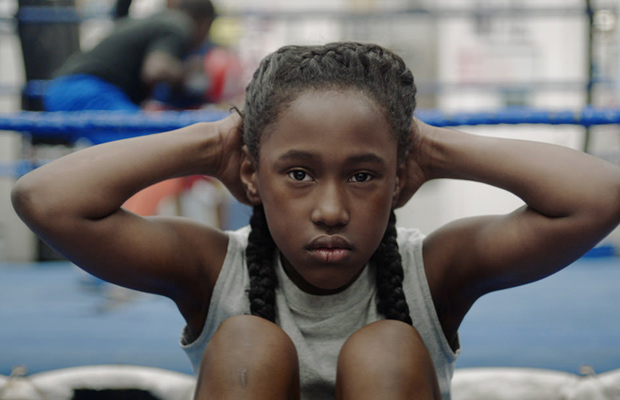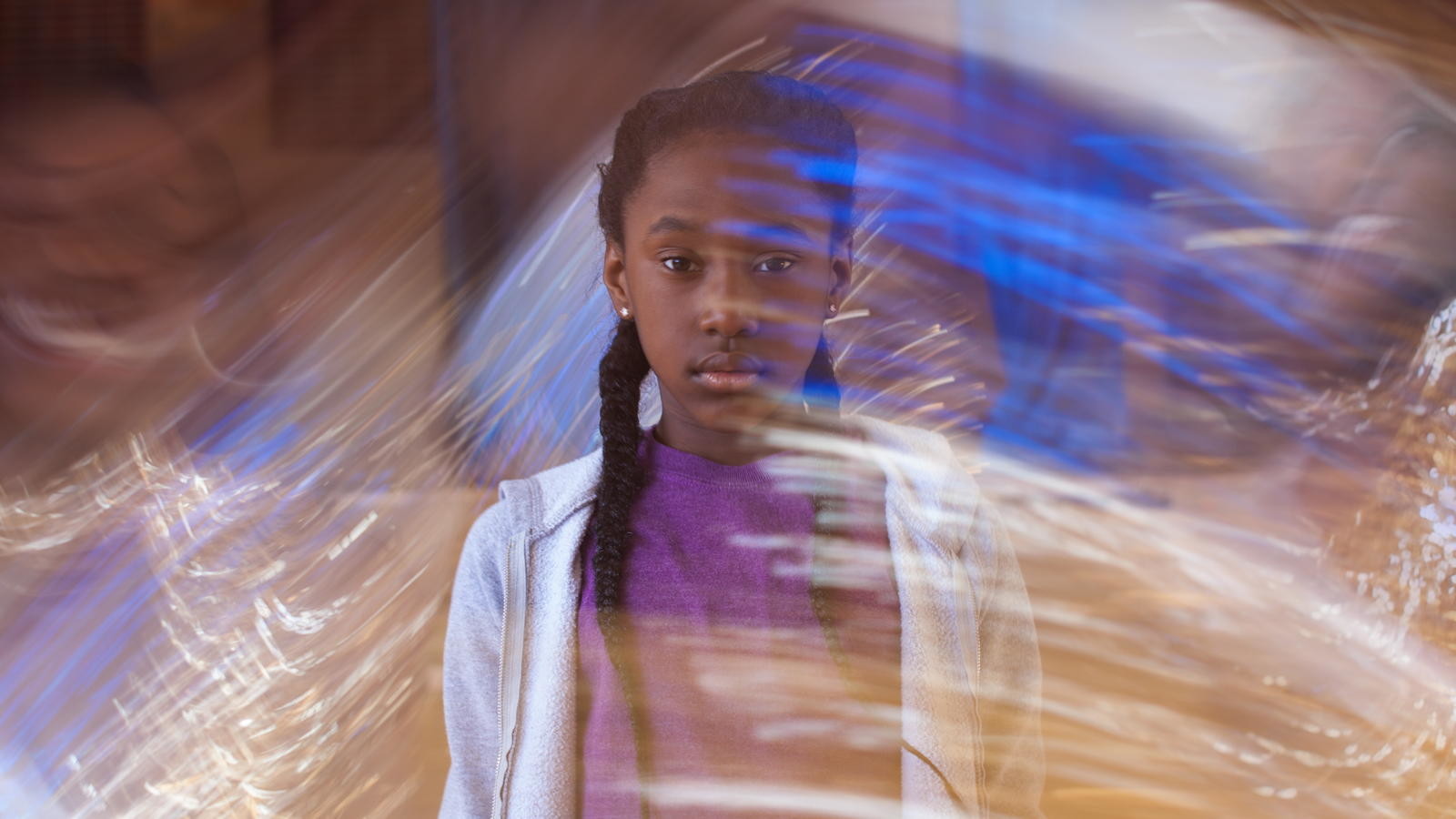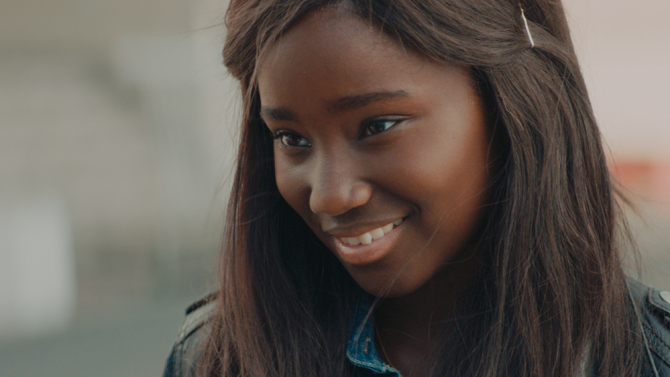This guest post written by Lee Jutton originally appeared at Medium and appears here as part of our theme week on Women Directors. It is cross-posted with permission.
I saw The Fits at a screening at the Museum of Modern Art that was followed by a Q&A with director Anna Rose Holmer, who described her film as portraying “adolescence as choreography.” I personally cannot think of a more apt way to describe the delicate movements one takes throughout the teenage years. One yearns to step into the spotlight and embrace one’s individuality while also fearing the consequences of doing so. It’s a delicate balancing act, wanting to be your own person while also wanting to fit in with everyone else. Just one misstep can ripple throughout one’s adolescence, leading to bullying and ostracizing. Once you’re an adult, you can look back and almost laugh at these things, many of which, in hindsight, seem so little as to barely be memorable; but at the time, these decisions are so massive that they can occupy your entire mind.
The Fits chronicles one girl’s journey to find herself both as an individual and as a part of a group. It’s a unique take on a timeless story, infusing the usual coming-of-age drama with a hearty splash of magical realism. Here, the choreography of adolescence is both figurative and literal. Eleven-year-old Toni, played by newcomer Royalty Hightower, is a quintessential tomboy who spends most of her time at a Cincinnati community center training as a boxer alongside her supportive older brother, Jermaine. One day, Toni finds herself drawn to the award-winning drill dance team that practices in the same building. The team, known as the Lionesses, are a tight-knit clique who barely notice Toni lugging her gym bag as they stream by her in the hall, giggling and glittering. After Jermaine catches Toni dancing around on her own, he encourages her to try out for the team, and despite a hilariously awkward first attempt at the team’s signature clap back call choreography, Toni is accepted as one of the newest Lionesses. However, it becomes clear it will take more than memorizing a few steps for Toni to fit in.
At one of her first rehearsals, Toni witnesses one of the Lionesses’ captains collapse with what appears to be a bout of seizures. Not too long afterward, a similar attack strikes down the team’s other captain. Soon, these episodes of hysteria, dubbed “the fits,” take the girls by storm. They start with the older, more experienced girls, but they gradually make their way down the hierarchy to the youngest and newest recruits. The community’s inability to explain why the episodes keep happening, compounded with the unpredictable way they occur, builds tension in the way of the best horror movies; after all, how can one not be terrified when it appears one doesn’t have control over one’s own body? Yet eventually the fits start to be seen less like a scary sickness and more like a desirable way to mark one’s progression into womanhood. Once one has had the fits, one has something to relate to the rest of the girls about; one truly feels like part of the team.
Having the fits bears a striking similarity to how so many girls feel about starting to menstruate; you’re afraid of it happening, this mysterious and morbid signifier of womanhood, but once it starts happening to everyone else, you can’t help but wonder when it will be your turn. (And, when it still doesn’t happen, if there’s something wrong with you.) At first, Toni is grateful to be spared from the fits, finding them frightening, but eventually, she starts to grow anxious about not having experienced this strange rite of passage. Already a girl of few words, Toni silently listens to her newfound friends gossip together about their own unique experiences with the fits — each attack different and yet somehow the same — while she is deemed unworthy of inclusion in the conversation. As one friend snaps at Toni, “You don’t know anything about it.” Toni grows increasingly distant from her old world of the boxing gym as she devotes more and more hours to perfecting the Lionesses’ choreography, yet because she has not experienced the fits, she remains on the outside of her new world looking in, a face peeking out from behind the backstage curtain. She’s stuck in the middle, with no clear place to belong.
In the absence of the fits, Toni tries to fit in in other ways, incorporating more feminine details into her appearance. However, in the end these are all uncomfortably rejected by her. When a friend applies a temporary tattoo to Toni’s arm, she peels it off; when her nails are painted with gold glitter polish, she picks away at it until the flecks litter the floor of the boxing gym. She even goes as far as to pierce her own ears in the community center bathroom, but eventually removes the sparkling studs, citing infection. In these small ways, Toni maintains some small part of her individuality in a world that values the team over the individual; she’s trying to fit in, but her willingness to do so will only go so far.
Hightower carries The Fits on her remarkably muscular shoulders. Reliant almost entirely on movement and expression, as opposed to dialogue, her performance is remarkably natural and her struggle to fit in relatable. When one learns that Hightower is in fact an experienced dancer who has been a member of the team portraying the Lionesses since she was small, as Holmer told us during the Q&A session, one is even more in awe of the evolution she manages to portray onscreen. I was someone who was incapable of sticking to the choreography growing up, both in my childhood dances classes and in my actual life. In some ways, I was proud of my ability to march to my own oddball tune, but in many others, I longed to know what it was like to be just one of the smiling girls in the line, never missing a beat. Watching Toni walk this tightrope in The Fits hit home for me in a way that very few movies about girlhood ever do.
Lee Jutton has directed short films starring a killer toaster, a killer Christmas tree, and a not-killer leopard. She previously reviewed new DVD and theatrical releases as a staff writer for Just Press Play and currently reviews television shows as a staff writer for TV Fanatic. You can follow her on Medium for more film reviews and on Twitter for an excessive amount of opinions on German soccer.










